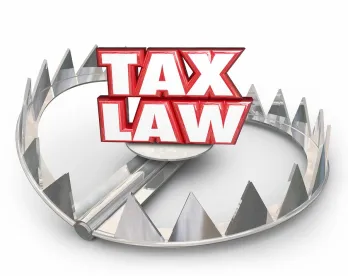On July 13, 2016, Judge Buch of the US Tax Court denied an Internal Revenue Service (IRS) motion to compel the production of electronically stored information (ESI) by Dynamo Holdings Limited Partnership and Beekman Vista, Inc., which was not delivered as part of a discovery response based on the mutually agreed-upon use of “predictive coding.” Predictive coding is an electronic discovery method that permits an efficient and effective approach when reviewing for relevance a large amount of data and documents. It is a relatively new discovery method that is gaining acceptance by courts around the country as an alternative to the costly and laborious physical review of data and documents. Judge Buch previously authorized the use of predictive coding in Dynamo Holdings, Ltd. vs. Commissioner, 143 T.C. No. 9 (2014).
The IRS and the taxpayers had agreed that the taxpayers would run a search for terms determined by the IRS on the potentially relevant documents. The taxpayers provided the IRS with samples of randomly selected documents from the universe of potentially relevant documents, from which the IRS identified the relevant documents. These selections were used to create a predictive coding model, which a computer can use to identify conceptually similar documents. The IRS also selected a “recall rate” of 95 percent. A search method’s recall rate is the percentage of all relevant documents in the search universe that are retrieved by that search method. The higher the recall rate, the fewer relevant but retrieved documents there will be. The taxpayers then delivered to the IRS all of the documents retrieved using the predictive coding model that were not privileged. More documents were identified in the initial search for terms than were identified using the predictive coding model. The IRS filed a motion to compel production of the documents identified in the initial terms search that were not produced.
The Tax Court denied the IRS’s motion, explaining that document review results are never perfect. The court stated that the IRS was seeking a perfect response, but that the Tax Court Rules and the Federal Rules of Civil Procedure require only that the responding party make a “reasonable inquiry” when making a discovery response. The court explained that “when the responding party is signing the response to a discovery demand, he is not certifying that he turned over everything, he is certifying that he made a reasonable inquiry and to the best of his knowledge, his response is complete.” The use of predictive coding does not change this standard, and the court held that the taxpayers satisfied the reasonable inquiry standard when they responded using predictive coding.
Practice Note: Due to the amount of data and documents generated by taxpayers in the normal course of business, discovery of ESI can be extremely burdensome and expensive for taxpayers. Nonetheless, it has become commonplace to see discovery requests for ESI. Although there is a substantial amount of guidance on this subject in other courts, the Tax Court has issued little on the subject. There are at least two strategy points and one major question presented by this topic. First, in complex, big dollar cases, taxpayers should spend the resources to understand the universe of information that may become part of a case. Often, this work should be performed during the audit phase of the case. Engage advisors who understand how to most efficiently and effectively collect, manage and review data. Second, when data and documents are requested, taxpayers and their advisors should enter into workable agreements with the IRS, both during examination and in litigation, to minimize the costs and resources required to respond to requests for ESI. For example, the parties should agree to the search terms that will be applied to the universe of data from which responses will be garnered.
An important question demonstrated by references to clawed-back documents in Dynamo is whether the use of predictive coding will adequately preserve attorney-client privilege and work-product protection. Claw-back agreements have long been standard practice in document reviews and litigation, but the potential for inadvertent disclosure is heightened as the review process becomes more automated. Further, claw-back agreements are not always an adequate remedy, for example, when the disclosure of the existence of certain documents—or the disclosure of whether certain topics were considered at all—is itself privileged information.
This recent order by the Tax Court provides useful guidance in this area and could be used to remind the IRS that predictive coding is a tested and accepted method of ESI discovery in the Tax Court.




 />i
/>i

